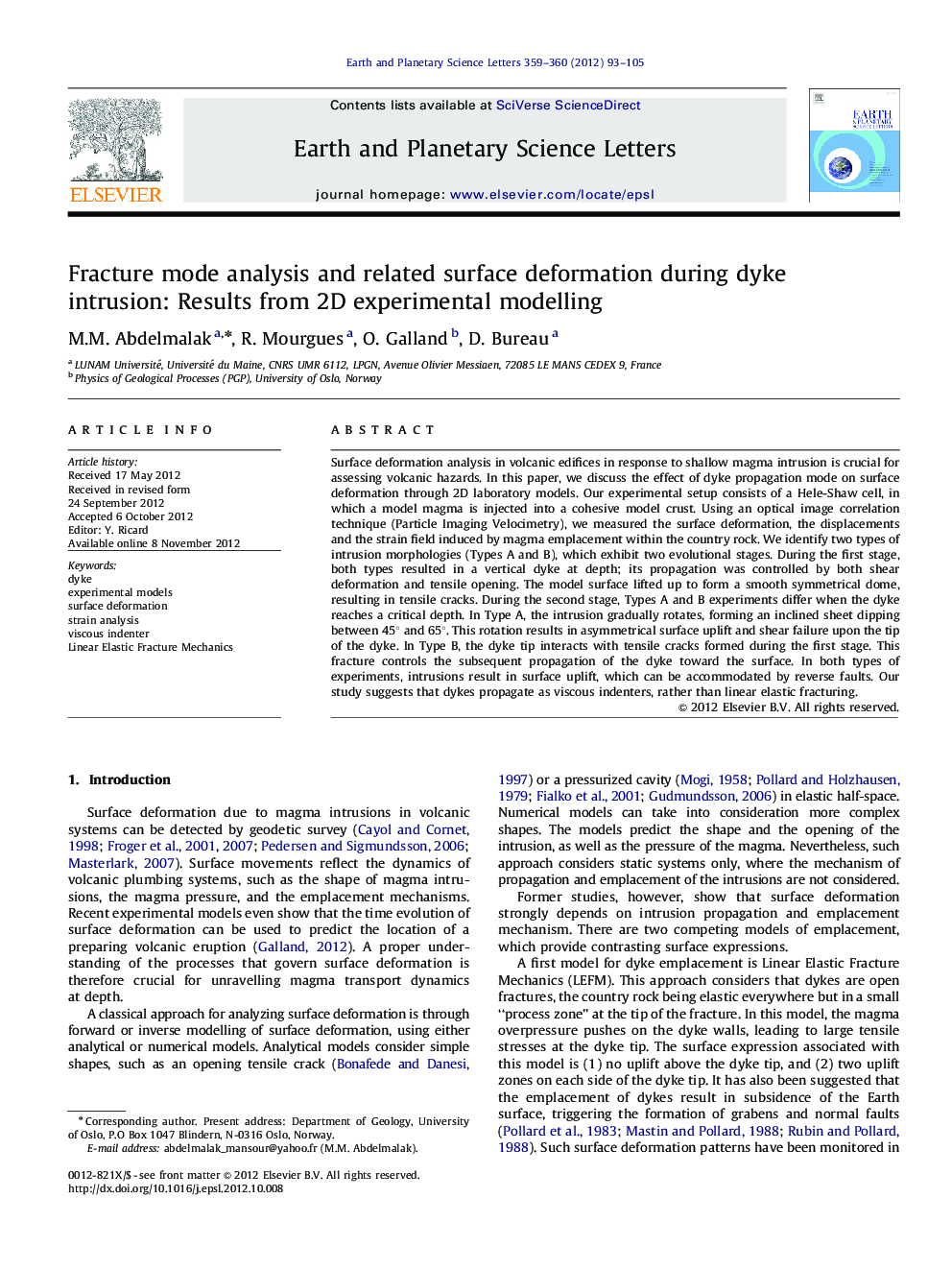| Article ID | Journal | Published Year | Pages | File Type |
|---|---|---|---|---|
| 6430386 | Earth and Planetary Science Letters | 2012 | 13 Pages |
Surface deformation analysis in volcanic edifices in response to shallow magma intrusion is crucial for assessing volcanic hazards. In this paper, we discuss the effect of dyke propagation mode on surface deformation through 2D laboratory models. Our experimental setup consists of a Hele-Shaw cell, in which a model magma is injected into a cohesive model crust. Using an optical image correlation technique (Particle Imaging Velocimetry), we measured the surface deformation, the displacements and the strain field induced by magma emplacement within the country rock. We identify two types of intrusion morphologies (Types A and B), which exhibit two evolutional stages. During the first stage, both types resulted in a vertical dyke at depth; its propagation was controlled by both shear deformation and tensile opening. The model surface lifted up to form a smooth symmetrical dome, resulting in tensile cracks. During the second stage, Types A and B experiments differ when the dyke reaches a critical depth. In Type A, the intrusion gradually rotates, forming an inclined sheet dipping between 45° and 65°. This rotation results in asymmetrical surface uplift and shear failure upon the tip of the dyke. In Type B, the dyke tip interacts with tensile cracks formed during the first stage. This fracture controls the subsequent propagation of the dyke toward the surface. In both types of experiments, intrusions result in surface uplift, which can be accommodated by reverse faults. Our study suggests that dykes propagate as viscous indenters, rather than linear elastic fracturing.
⺠Paper presents quantitative 2D experimental models of dyke intrusion. ⺠Setup allows measurements of surface deformation and strain field induced by dyke. ⺠Results are not in agreement with the classical Linear Elastic Fracture Mechanics theory. ⺠Experiments suggest that dykes propagate as viscous indenters. ⺠Dyke mechanics should be considered for ground deformation analyses in volcanoes.
